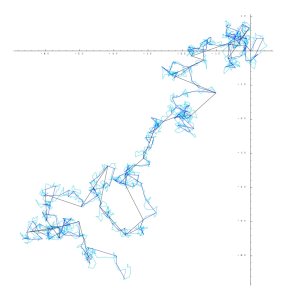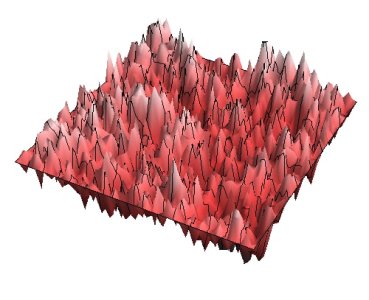Oxford Mathematician Ilya Chevyrev talks about his research into using stochastic analysis to understand complex systems.
"Stochastic analysis sits on the boundary between probability theory and analysis. It is often a useful tool in studying complex systems subject to noise. Such systems appear frequently in the financial markets, statistical physics, mathematical biological, etc., and it becomes extremely important to determine their statistical properties: can the noise cause the system to blow-up or collapse? How quickly do small perturbations propagate? Is there an equilibrium state? Is it always reached? Due to the fundamental importance of such questions, mathematicians from many fields have devised methods to address them, ranging from the analysis of partial differential equations (PDEs) to game theory.
A question one often encounters is whether a family of stochastic systems converges to a well-defined limit. For example, consider the Glauber dynamics of the Ising-Kac model: we are given a two dimensional lattice $\epsilon \mathbb{Z}^2$ with spacing $\epsilon > 0$. At each site we place a ferromagnet carrying an up or down spin (i.e. we consider a function $\sigma : \epsilon \mathbb{Z}^2 \to \{-1,1\}$). As time evolves, the ferromagnets interact according to some prescribed dynamics. Sending the lattice spacing $\epsilon \to 0$ and rescaling the dynamics appropriately, one is interested in whether the process converges to a non-trivial limit (for this exact example, see this article of Mourrat-Weber).
It turns out that for a wide class of models, one can describe (or at least expect to describe) the limit as a stochastic PDE of the form \[ \partial_t u = \mathcal{L} u + F(u,\nabla u, \xi) \] where $\mathcal{L}$ is an elliptic operator, $F$ is a non-linearity which can depend on the solution $u$ and its derivatives $\nabla u$, and $\xi$ is the noise term. A difficulty one often encounters in studying such equations is that they are classically ill-posed. This means that, given a typical realisation of $\xi$, there exist no function spaces in which we can solve for $u$ using e.g. a fixed point argument. Whenever this occurs, we call the equation singular. The fundamental obstacle, which is also typically encountered in quantum field theory (QFT), is that there is no canonical way to define products of distributions.
An example of a singular SPDE with motivations from QFT is the dynamical $\Phi^4_3$ model \[ \partial_t u = \Delta u - u^3 + \xi \] posed in $(1+3)$-dimensions $u : [0,T]\times \mathbb{R}^3$. Here $\xi$ is a space-time white noise on $ \mathbb{R}^4$ (a random distribution). The noise is sufficiently irregular that we expect the solution $u$ to belong to a space of distributions (not functions!), rendering the cubic term $u^3$ ill-posed. This has further ramifications if one takes approximations of the equation: substituting $\xi$ by a smoothed out version $\xi_\epsilon$ so that $\xi_\epsilon \to \xi$ as $\epsilon \to 0$, the corresponding classical smooth solutions $u_\epsilon$ do not converge to a non-trivial limit as $\epsilon \to 0$.
Starting with the famous KPZ equation, the last five years have seen much progress in providing a solution theory to singular SPDEs. The theories of regularity structures and paracontrolled distributions have been particularly successful at this task. An important feature of any such solution theory is the need for renormalization: smooth/lattice approximations of the equation converge only after appropriate counterterms are added to the equation. In the $\Phi^4_3$ example, this means that there exists a diverging family of constants $(C_\epsilon)_{\epsilon > 0}$ such that solutions to the renormalised PDEs \[ \partial_t u_\epsilon = \Delta u_\epsilon - u_\epsilon^3 + \xi_\epsilon + C_\epsilon u_\epsilon \] converge to a non-trivial limit. It is this limit which one calls the solution of the original $\Phi^4_3$ SPDE.
In a recent paper with Bruned, Chandra and Hairer (Imperial College London) we developed a systematic method to determine the counterterms needed to solve a very general class of SPDEs. Combined with other recent results in regularity structures, particularly with a version of the BPHZ renormalization scheme from perturbative QFT, this essentially provides a robust method to solve general systems of semi-linear SPDEs which are subcritical (this last constraint is known in QFT as super-renormalizability). The fundamental technique behind our approach is algebraic, motivated in particular by pre-Lie algebras."



